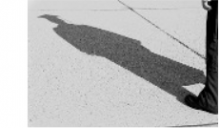 PhD defense of Faisal AHMAD on 09/29/2023
PhD defense of Faisal AHMAD on 09/29/2023


PhD defense of Faisal AHMAD of Laboratoire Rhéologie et Procédés (LRP) and TIMC PRETA, on September, the 29th at 01:45pm:
" Investigating gastrointestinal function at macro and micro scales: Insights from fluid dynamics models. "
-
Place : salle de conférences (rdc) du bâtiment Nanobio DCM, 570 rue de la Chimie, Campus universitaire de Saint-Martin d'Hères
Jury :
- Clément DE LOUBENS, Chargé de recherche, Université Grenoble Alpes - Supervisor de thèse
- Stéphane TANGUY, maître de conférence, HDR, Université Grenoble Alpes - Co-supervisor de thèse
- Valérie DEPLANO, Directrice de recherche, CNRS Marseille - Reporter
- Aline BEL-BRUNON, Maîtresse de conférence, HDR, INSA Lyon - Reporter
- Philippe PEYLA, Professeur des Universités, Université Grenoble Alpes - Examiner
 Key words
Key words
microfluidics ; fluid-structure interactions ; rheology ; biofluidics ; biomechanics ; soft matter
 Abstract
Abstract
The gastrointestinal (GI) tract plays a crucial role in the digestion and absorption of nutrients. The complex motility of the GI tract is driven by its own motor activity. Smooth muscle motility is essential for food breakdown, mixing with secretions, nutrient absorption, and the transport of digesta along the GI tract. Despite its importance, many aspects of its biomechanics are not well understood. Therefore, mechanistic models are required to gain more insights into the function of the GI tract. In this thesis, we focus on two main aspects by coupling computational fluid dynamics (CFD) with experimental imaging techniques. The first one is related to the flow of complex fluids, the feces, in the rectum. The second one involves flow phenomena at microscopic scales due to the presence of small-scale active structures in the small intestine, the villi.
Firstly, we develop a patient-specific two-dimensional (2D) CFD model of rectal evacuation by combining video-defecography and a lattice-Boltzmann flow solver. The video-defecographies are carried out with a neo-stool with a soft feces-like rheology which was modelled as a yield stress fluid. In normal defecation, the simulated pressure field demonstrates near homogeneity within the rectal cavity, with a gradient observed from the anorectal junction to the anal canal. Consequently, the pressure loss is attributed to the flow of feces through the anorectal junction and anal canal. The pressure gradient is controlled by the shear-thinning properties of the neo-stool rather than its yield stress, resulting in strongly non-linear pressure-flow rate relationships. Pressure fields for patients showing impaired defecation are also simulated. Comparisons with normal patients reveal potential dysfunction in rectal wall contractility for certain individuals.
Secondly, we investigate fluid flow phenomena at microscopic scales driven by the motility of small intestine villi. Using spatiotemporal motility data of the rat duodenum, we simulate the flow induced by the motion of these villi by lattice-Boltzmann methods for Newtonian fluids. We hypothesize that the villi's motion is induced by fast phasic contractions of the longitudinal smooth muscles. The 2D model represents an infinite array of rigid villi with leaf-like structures, where each villus oscillates longitudinally with a fixed phase lag from neighboring villi. This results in pulsatile radial and axial fluxes. Importantly, the motion of the villi induces a permanent flow in regions where the flow would otherwise be stagnant, due to the phase lag and inertia effects. This motion also leads to irreversible axial pumping in the lumen. These induced fluxes are expected to significantly enhance mass transfer and promote mixing toward the villi.
Finally, we present the development of an original experimental set-up aimed at studying small intestine motility and flow at the scale of the villi. The uniqueness of this setup lies in its ability to observe small intestine villi under iso-tonic conditions. In order to validate the physiological relevance of the device, we quantified the motility of the duodenum under various loads. The data obtained aided in the analysis of duodenal motility at the macroscopic scale using parameters such as amplitude and frequency of contractions, as well as strain rate maps at the microscopic scale. Looking ahead, the future scope of the device involves observing fluid flow patterns around the villi in the open duodenum and utilizing the data in CFD models.
In conclusion, this thesis integrates imaging techniques and fluid dynamics models, exploring transport phenomena in the GI at macro and micro scales. By providing valuable information, this thesis enhances GI biomechanics comprehension and holds clinical promise.
